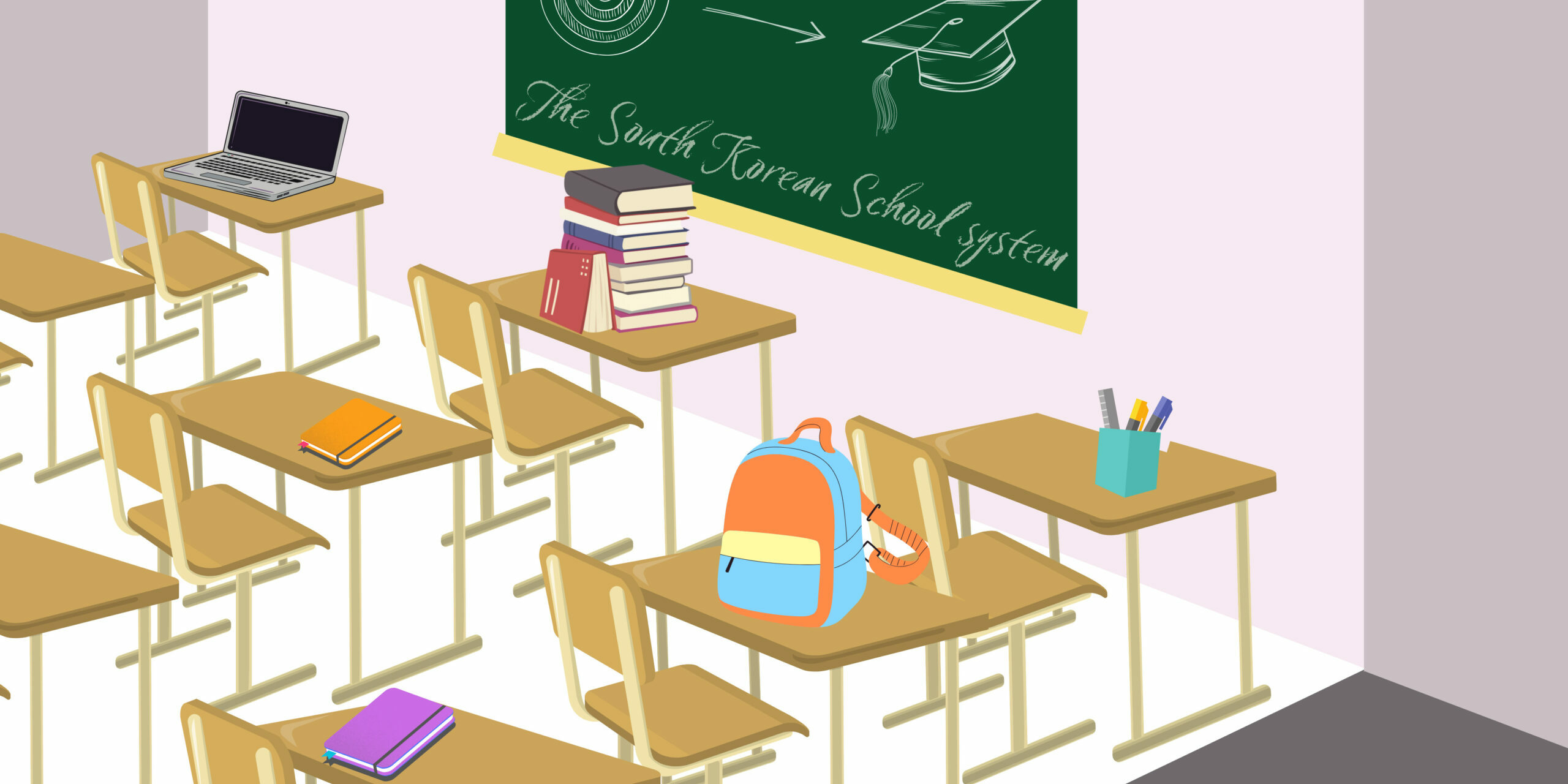As you may know, the South Korean school system is often the subject of debates. Let’s talk about how it works!
 How is it organised?
How is it organised?
Like in most countries, the South Korean school system is divided into 3 sections: Elementary school, Secondary school (middle school and high school) and University. Children often attend Preschool before elementary school for a 3-year period, but the curriculum is only compulsory between elementary and high school. Here, the school year starts in March and ends in February, with two month of summer vacation cutting between the two semesters.
Elementary school lasts for 6 years, followed by 3 years of middle school and 3 years of high school. After that, the average university curriculum lasts for 4 years. As you may know if you consume South Korean media, students here all wear uniforms tailored according to the school!
It is very common for students of all ages to attend tutoring academies -or hagwons– after mandatory school hours. There, students study extremely hard and until very late from a young age. These schools aim to prepare children and teenagers for the main exam called the suneung or College Scholastic Ability Test (CSAT) that happens at the end of the high school curriculum. This test ranks student in order to determine who will get access to university, especially the top three (Seoul National University, Korea University and Yonsei university).
The CSAT happens in November of every year. It lasts for 9 hours and covers subjects such as science, Korean and mathematics. Its importance on a national scale is immense. Indeed, latecomers are escorted to their schools by the police, the national air traffic is suspended, public facilities adapt their opening hours to avoid traffic during rush hours!
 Results and consequences
Results and consequences
The South Korean education system is very rigorous and test-driven. When it comes to the general results of it, the country has a very high literacy rate with almost 98%! Around 70% of 25- to 34-year-old South Korean have a university diploma. This ranks the country first in the OECD!
However, some people think the system is too competitive and unequal. The “suneung” is a prime example of that. The pressure this test causes is due to different factors. First, it’s important to note that the university South Koreans attend is of great influence on their future career. Also, the CSAT is a difficult exam: in 2018, 530 220 students took the test but only 9 of them got a perfect score… Another important element is the relative grading system. The competition it involves is the source of immense pressure on the shoulders of South Korean students from their early teenage years.
Moreover, even if public education is quite inexpensive in South Korea, hagwons are usually extremely costly academies. On average, parents spend around 800 USD a month on their children’s education. That situation enhances social imbalances and polarization between the poor and the wealthy.
Fortunately, efforts are made in order to reduce the pressure for students! Some regions passed regulations for the amount of hours students are allowed to spend in private academies. The general public is getting more and more informed on the importance of mental health and the damages such pressure could have on one’s happiness.
In 2022, an education organization filed a petition to try and rule the relative grading system as unconstitutional. This was on the basis that it goes against the rights to a healthy and pleasant environment as well as the equal right to education and the right to pursue happiness. Almost 100 lawyers signed that petition! Let’s hope that in the future things get better for South Korean students to be able to express their intellectual capacities with less pressure!
Thank you for reading this article! Check out our other subjects!
Sources
School in South Korea – Learn about their education system, 90 Day Korean
Education in South Korea, Korean Education Center UK

